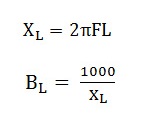IGMP (Internet Group Management Protocol) operates at Layer 3 (Network Layer) of the OSI model. Its primary function is to manage multicast group memberships within a network. IGMP enables hosts to inform routers about their interest in receiving multicast traffic for specific multicast groups. Routers use this information to efficiently deliver multicast packets only to those networks and hosts that have explicitly requested them, minimizing unnecessary network traffic and optimizing bandwidth usage.
In the OSI model, IGMP corresponds to Layer 3, the Network Layer. This layer is responsible for routing and forwarding data packets across different networks based on logical addressing (such as IP addresses). IGMP operates alongside IP (Internet Protocol) to manage multicast group memberships and ensure efficient delivery of multicast traffic within IP networks. By functioning at Layer 3, IGMP interacts directly with IP routing processes to handle multicast group management and communication between hosts and multicast routers.
IGMP (Internet Group Management Protocol) and ICMP (Internet Control Message Protocol) serve distinct purposes within network communications. IGMP operates specifically to manage multicast group memberships and facilitate the delivery of multicast traffic across IP networks. In contrast, ICMP is used for diagnostic and error reporting functions within IP networks, such as sending error messages to indicate network problems like unreachable hosts or network congestion. While both protocols are essential for network operations, they address different aspects of network management and communication, with IGMP focusing on multicast group management and traffic optimization.
Multicast and IGMP are related concepts but serve different roles in network communication. Multicast refers to a network transmission method where a single packet is sent from one sender to multiple recipients simultaneously. It is used to efficiently distribute data to multiple hosts that belong to the same multicast group, reducing network traffic and conserving bandwidth compared to unicast (one-to-one) transmissions. IGMP, on the other hand, is the protocol used by hosts to inform routers about their membership in multicast groups and their interest in receiving multicast traffic. IGMP enables routers to efficiently manage multicast group memberships and deliver multicast packets only to interested hosts, ensuring optimal network performance and resource utilization.
IGMP snooping operates at Layer 2 (Data Link Layer) of the OSI model. It is a feature found in network switches that listens to IGMP messages exchanged between hosts and multicast routers. By snooping on these IGMP messages, Layer 2 switches can intelligently forward multicast traffic only to those ports where hosts have explicitly requested to receive multicast packets. IGMP snooping helps optimize network bandwidth usage and reduce unnecessary multicast traffic within local network segments, enhancing overall network efficiency and performance.
